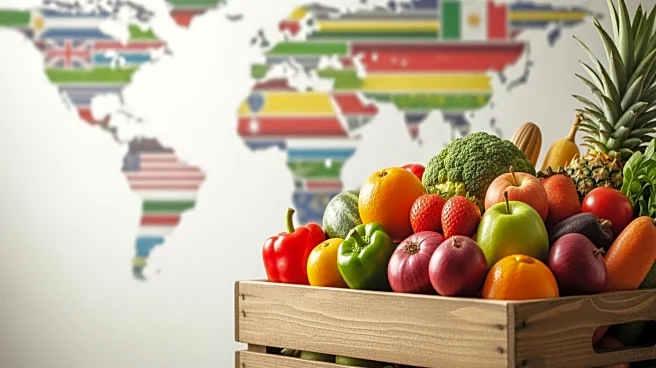What's Happening?
The USDA's November crop report and China's trade behavior are influencing U.S. agricultural markets. The USDA report, with yield estimates for corn and soybeans, could lead to price changes if ending stocks and yields are adjusted. Meanwhile, China's purchasing
decisions, affected by trade tensions and tariffs, are impacting soybean exports. China has not committed to U.S. soybean purchases from May to October, relying on South American imports instead. This situation is causing strain on American farmers, with production costs rising and market losses increasing.
Why It's Important?
The USDA report and China's trade behavior are critical for U.S. agricultural markets, affecting commodity prices and farmer profitability. Changes in yield estimates can lead to significant price movements, impacting farmers' revenue and market strategies. China's shift in purchasing behavior, influenced by tariffs and trade tensions, poses a risk to U.S. soybean exports, which are a major agricultural export. The uncertainty in trade relations and market conditions could lead to financial challenges for farmers and influence broader economic stability.
What's Next?
The agricultural markets are in a 'wait and see' mode, with potential changes in prices and trade relations on the horizon. The USDA report could lead to bullish surprises if yield estimates are lower than expected. Farmers and market participants will be closely monitoring China's purchasing decisions and any developments in trade negotiations. The U.S. government shutdown and potential Supreme Court rulings on tariffs add to the uncertainty, with implications for economic stability and trade policies.
Beyond the Headlines
The ongoing trade tensions and market uncertainties highlight the complex interplay between international relations and domestic agricultural policies. The situation underscores the need for strategic planning and risk management in the agricultural sector. It also raises questions about the long-term impact of trade policies on U.S. agriculture and the potential for shifts in global supply chains.














